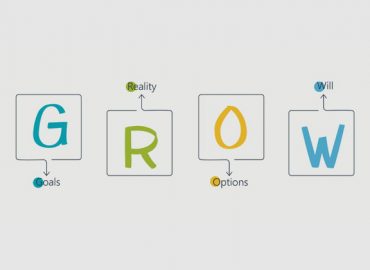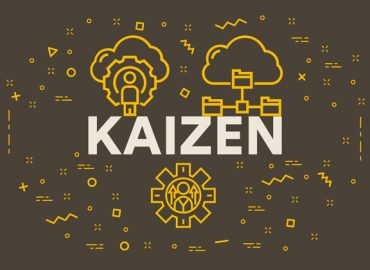In today’s competitive market, businesses constantly assess methodologies to boost efficiency, reduce waste, and improve customer satisfaction. Lean Six Sigma, a powerful combination of Lean manufacturing principles and Six Sigma techniques, has emerged as a leading approach to achieving these goals. This introductory guide aims to elucidate how Lean Six Sigma can transform your business by streamlining processes, improving productivity, and fostering a culture of continuous improvement.
Understanding Lean Six Sigma
Lean Six Sigma is a synergistic methodology that combines the waste-reduction principles of Lean with the defect-reduction focus of Six Sigma. Its goal is to create more value for customers using fewer resources by identifying and eliminating waste, which includes any activity that does not add value to the customer. On the other hand, Six Sigma focuses on improving quality by identifying and discarding the sources of defects and limiting variability in manufacturing and business processes. Together, Lean Six Sigma provides a comprehensive framework for operational excellence.
Steps to Transform Your Business with Lean Six Sigma
- Identify Key Processes and Value Streams
- The first step is identifying your organisation’s core processes and value streams. This involves mapping the workflow to understand how value is delivered to the customer. Doing so lets you pinpoint areas where waste occurs and improvements can be made.
- Define Clear Objectives and Metrics
- Create clear objectives aligned with your business goals. These objectives should be specific, measurable, achievable, relevant, and time-bound (SMART). Define key performance indicators (KPIs) to track progress and measure the success of Lean Six Sigma initiatives.
- Engage Leadership and Form Cross-Functional Teams
- Successful Lean Six Sigma implementation requires strong leadership commitment. Engage senior management to champion the initiative and ensure alignment with strategic goals. Form cross-functional teams comprising employees from various departments to foster collaboration and leverage diverse perspectives.
- Train and Develop Skills
- Provide Lean Six Sigma training to employees at all levels. This can include Yellow Belt, Green Belt, and Black Belt training programs, which equip employees with the essential skills to identify, analyse, and solve problems using Lean Six Sigma tools and techniques. Continuous learning and development are essential to sustaining the initiative.
- Conduct Process Analysis and Data Collection
- Analyse the identified processes to understand current performance and identify root causes of inefficiencies. Collect data to establish baselines and measure the extent of variability and defects. Value Stream Mapping (VSM), process flowcharts, and statistical analysis are instrumental in this phase.
- Implement Improvement Projects
- Based on the analysis, develop and implement targeted improvement projects. The Define, Measure, Analyse, Improve, Control (DMAIC) framework guides project execution. This structured approach ensures that improvements are data-driven and sustainable.
- Monitor and Sustain Improvements
- After implementing improvements, it is essential to monitor the results continuously. Use control charts and other monitoring tools to track performance and ensure improvements are sustained over time. Establish standard operating procedures (SOPs) and provide ongoing training to reinforce new practices.
- Foster a Culture of Continuous Improvement
- Lean Six Sigma is a continuous journey. Encourage a culture of constant improvement by recognising and rewarding contributions, promoting open communication, and involving employees in decision-making processes. Regularly review and update objectives and strategies to adapt to changing business environments.
Benefits of Lean Six Sigma
Implementing Lean Six Sigma can yield numerous benefits, including:
- Enhanced Efficiency: By eliminating waste and reducing variability, businesses can streamline operations, leading to faster turnaround times and reduced costs.
- Improved Quality: Lean Six Sigma’s focus on defect reduction and process optimisation results in higher-quality products and services, increasing customer satisfaction.
- Greater Employee Engagement: Involving employees in improvement initiatives creates a sense of ownership and empowerment, boosting morale and productivity.
- Better Decision Making: Data-driven decision-making ensures that changes are based on objective analysis, leading to more effective and sustainable improvements.
Conclusion
Lean Six Sigma offers a robust framework for businesses to achieve operational excellence. By systematically identifying and eliminating waste, reducing variability, and creating a culture of constant improvement, Lean Six Sigma can transform your business, driving sustainable growth and enhancing competitiveness. Adopting this methodology requires commitment, training, and a strategic approach. Still, the rewards for efficiency, quality, and customer satisfaction are worth the effort.
Ready to transform your business with Lean Six Sigma? Contact us today to learn more about our Lean Six Sigma training programs and start your journey towards operational excellence.
What is DFSS? Design for Six Sigma is used to perfect products and processes before...
What is DOE? In general usage, design of experiments (DOE) or experimental design is the...
What is coaching? Coaching is a cyclical process of elevating the other persons’ awareness of...
Lean Six Sigma is a powerful method for improving existing products, processes and services. One...
Introduction In our lean six sigma projects, too often we spend all our time on...
What is a Kaizen Blitz? Kaizen definition has been Americanised to mean “Continual Improvement.” A...
Overview Layout planning is one of the most important aspects of Lean manufacturing. In some...
As global competition continues to grow, the pressure to improve becomes more and more intense....
What is SMED? SMED is the term used to represent setup time and is often...
Lean Six Sigma projects can lead to a rewarding experience and immense benefits for an...
Introduction Value Stream Map (VSM) is a diagram of every step involved in the material...
Attending our Public classroom physically or joining the team virtually from anywhere, according to the training calendar.
A flexible self-paced training for busy people along with our support by a dedicated coach, to solve the disadvantage of one-way online training
Delivering flexible and tailored training for your team and at your premises as a cost-effective solution for your team.













